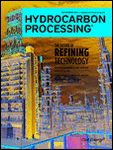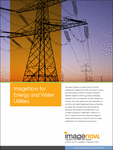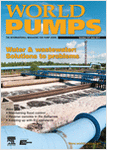Progressive Freeze Concentration Research
Friday, July 23, 2010
The VIVA started at 9.30 am. We arrived at the examination room at 8.30 am to prepare and set up all that are necessary. The VIVA session ended at about 12.15 noon and she passed her Ph.D with minor correction.


In case you are wandering what is this research all about, here is the abstract of the study. Maybe some of you who are interested can collaborate with Dr. Mazura or become her student to further develop the PFC technology which is the first in Malaysia.
Abstract : DEVELOPMENT OF A NOVEL DESIGN FOR PROGRESSIVE FREEZE CONCENTRATION PROCESS
Industrial wastewater may well be treated by freeze concentration, a process which freezes or crystallises out water content as pure ice crystals and leaves behind a highly concentrated solution in a smaller volume. In conventional suspension freeze concentration (SFC) where ice crystals formed as a suspension in the mother liquor, separation of the solid-liquid mixture is difficult and costly. The size of ice crystals is still very limited and the seeding process requires usage of scraped surface heat exchangers (SSFE), which is significantly expensive and accounted for approximately 30% of the capital cost. Progressive freeze concentration (PFC) invented later is believed to provide cost saving and simplify the subsequent ice-liquid separation as ice crystals are formed as a layer or a block on the cooling surface. Quest for a design providing convenience and good efficiencies continues, and in this study a helical structured copper crystalliser was developed and fabricated named Multi-wind Crystalliser (MWC). Effects of several operating conditions on the performance of MWC in context of wastewater treatment were then investigated including circulation flowrate, initial solution concentration, coolant temperature and circulation time. The performance of the design was evaluated by three dependent variables including the effective partition constant, K, calculated from the volume and concentration of the solid and liquid phase. Two other parameters were ice purity and solution volume reduction. A process optimisation was also performed thereafter employing STATISTICA to produce optimum conditions in favour of the stated independent variables. As the crystalliser designed involves heat transfer, the overall heat transfer coefficient was also calculated through temperature profiling subsequently generating a prediction model for ice crystal mass. At the end of the research, a new crystalliser design for PFC is established and an observation of how the operating conditions affect the performance of the system was obtained. Optimum operating conditions was determined by process optimisation and an overall heat transfer coefficients were also generated. Adequacy and reliability of the ice crystal mass prediction model produced was proven by error analyses revealing relatively small errors.
Now...It's my turn to complete my Ph.D... :)
-------------------------------------------------------------------



 Have you downloaded my free "Choosing Alternative Fuel" Ebook? If not, then please download it here. It's Free and on top of getting the free ebook, you'll get eCourse on Alternative Fuel. It's a good and easy way to add more valuable information to yourself.
Have you downloaded my free "Choosing Alternative Fuel" Ebook? If not, then please download it here. It's Free and on top of getting the free ebook, you'll get eCourse on Alternative Fuel. It's a good and easy way to add more valuable information to yourself.Labels: Chemical Engineer, Chemical Engineering, pH.D, Review, Study
posted by Kipas Repair JB @ 6:30 PM,
![]()
0 Comments:
The Author

I’m Zaki. I used to be a project, process and chemical engineer. Few years ago I successfully became a Chartered Engineer (IChemE) and Professional Engineer (BEM). I'm now employed as a chemical engineering educator/researcher/consultant. Hope you like reading my blog. I welcome any feedback from you. My email: zaki.yz[alias]gmail.com. TQ!



